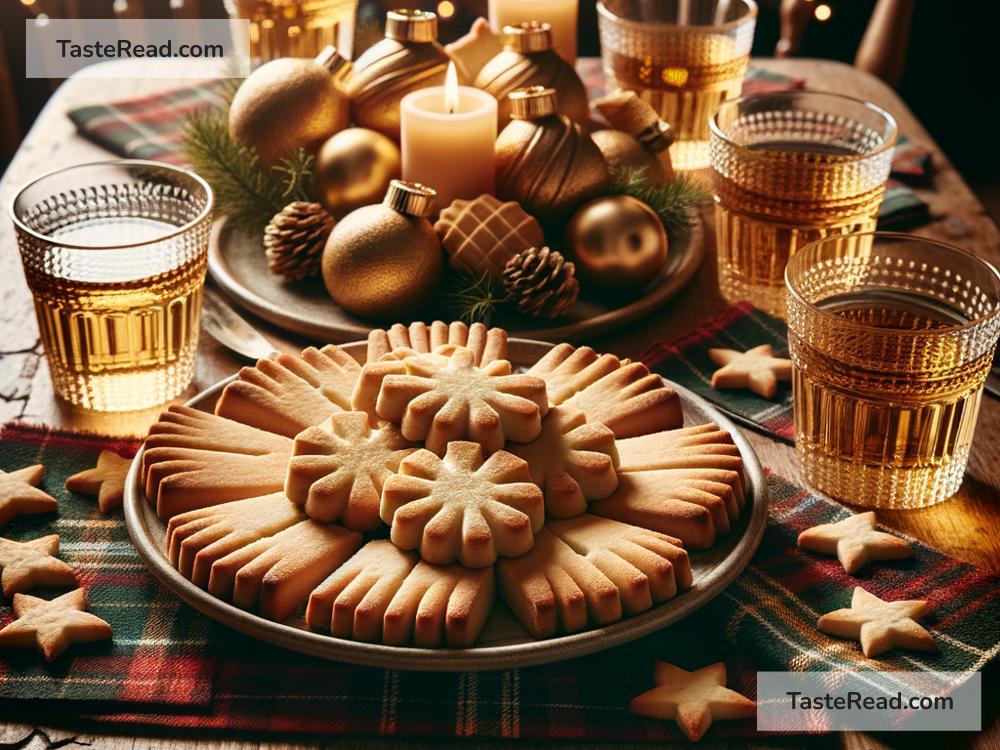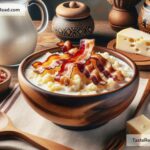Scottish Shortbread and Hogmanay: A Sweet Tradition
Scottish shortbread is a famous and delicious treat loved all over the world. With its buttery, crumbly texture and sweet taste, shortbread is a simple yet delightful creation that has stood the test of time. But this humble biscuit isn’t just a tasty snack—it also holds a special place in Scottish culture and traditions, especially during Hogmanay, Scotland’s New Year celebration. Let’s explore the history of shortbread, its connection to Hogmanay, and why it remains a cherished part of Scottish festivities.
What Is Scottish Shortbread?
Scottish shortbread is a type of biscuit made from just three main ingredients: butter, sugar, and flour. Some variations may include a pinch of salt, rice flour, or cornstarch to make the texture even softer. What makes shortbread special is the high butter content, which gives it its moist, melt-in-your-mouth quality.
Traditionally, shortbread is shaped into three basic forms: round biscuits, rectangular fingers, or large, flat rounds divided into wedge-like portions called “petticoat tails.” The name “petticoat tails” is said to come from the triangular pieces resembling the shape of old-fashioned skirts.
Shortbread has been a popular treat in Scotland for centuries. Historians believe the recipe evolved from a medieval biscuit known as “biscuit bread,” which was made from leftover bread dough and dried to make it last longer. Over time, thanks to Scotland’s love for rich flavors, butter replaced yeast, and the recipe transformed into the shortbread we know today.
The History of Shortbread in Scotland
Shortbread became a symbol of luxury in Scotland during the 16th century. Butter and sugar were expensive items back then, so shortbread was considered a treat for special occasions. In fact, during her reign, Mary, Queen of Scots, popularized a specific form of shortbread made with caraway seeds.
Over time, shortbread became associated with celebrations and holidays. It was often baked for weddings, Christmas, and other joyous events. Its rich flavor and delicate texture made it a favorite among Scots and people across the globe.
What Is Hogmanay?
Before we dive into shortbread’s connection to Hogmanay, let’s first look at what Hogmanay is. Hogmanay is the Scottish name for New Year’s Eve, celebrated on December 31. While New Year is celebrated all over the world, Hogmanay holds a particularly special place in Scottish culture. The origins of Hogmanay go back centuries, possibly influenced by Norse and Celtic winter solstice traditions, as well as Roman celebrations of Saturnalia.
Hogmanay celebrations include music, dancing, events, and fireworks, but they are also filled with customs that reflect Scotland’s rich heritage. One of the most famous customs is known as “first-footing.” This involves welcoming the first visitor to your home after midnight on New Year’s Day. According to tradition, the “first-footer” brings blessings and good luck for the year ahead. The most lucky first-footer is said to be a dark-haired man, who often comes bearing gifts, such as coal, whiskey, or shortbread.
Shortbread’s Role in Hogmanay Celebrations
Shortbread plays an important part in Hogmanay traditions. As one of Scotland’s iconic foods, it symbolizes warmth, hospitality, and celebration. During Hogmanay, families make or buy shortbread to share with guests, including first-footers. Offering shortbread is a way to show generosity and welcome good fortune into the home for the upcoming year.
In addition to being a part of first-footing, shortbread is often shared during New Year’s Eve parties and gatherings. Its comforting sweetness and luxury are perfect for festive occasions, and it pairs wonderfully with other Hogmanay treats, such as whiskey, oatcakes, and black bun, a richly spiced fruit cake.
For many Scots, shortbread is more than just a dessert; it’s a piece of history passed down through the generations. Baking shortbread for Hogmanay is often a family tradition, with recipes that have been kept secret and cherished for years. Some families tweak their recipes slightly by adding ingredients like vanilla, lemon zest, or even chocolate, while others stick to the classic three-ingredient formula.
Why Shortbread Still Matters
Even in modern times, shortbread holds a special place in Hogmanay celebrations. While other festive foods may come and go, shortbread remains a constant. Why? Because it represents something timeless. The simplicity of shortbread ties together the past, present, and future of Scotland’s culture.
Shortbread also embodies the spirit of Hogmanay itself: sharing and connection. By offering shortbread to friends, family, and neighbors, Scots continue to honor their traditions while spreading happiness and good cheer.
Make Your Own Shortbread for Hogmanay
If you’d like to add a touch of Scottish tradition to your own New Year’s celebration, shortbread is incredibly easy to make. Here’s a simple recipe:
Ingredients:
– 200g (1 cup) butter, softened
– 100g (1/2 cup) sugar
– 300g (2 cups) plain flour
Instructions:
1. Preheat your oven to 160°C (320°F).
2. Cream the butter and sugar together until smooth and fluffy.
3. Slowly add the flour, mixing until the dough comes together.
4. Roll out the dough and shape it into rounds, fingers, or wedges.
5. Place on a baking tray and chill in the fridge for 30 minutes.
6. Bake for 20–25 minutes or until lightly golden. Let cool before serving.
Whether you bake it yourself or buy it from a store, shortbread is a sweet reminder of Scotland’s rich traditions. As you enjoy its buttery goodness this Hogmanay, you’ll be celebrating not just the start of a New Year, but also centuries of Scottish culture and history. So raise a glass, enjoy some shortbread, and say “Slàinte mhath!”—good health—to the year ahead.


